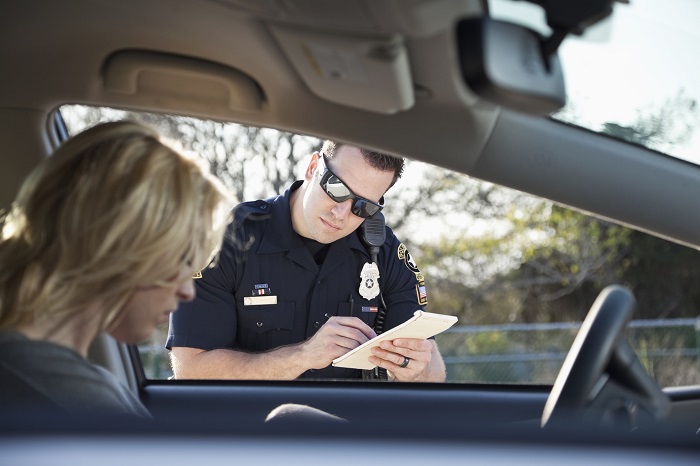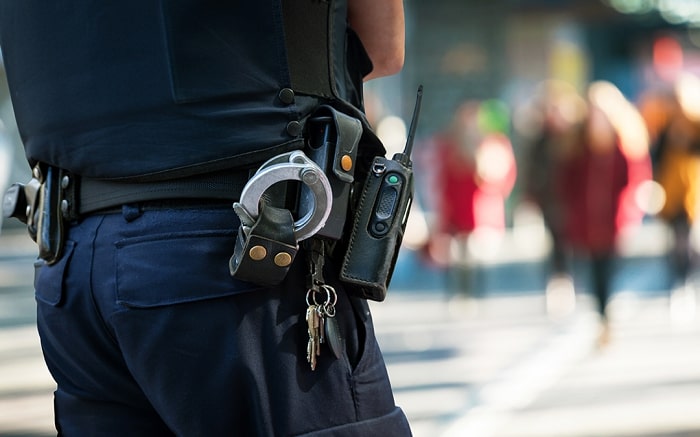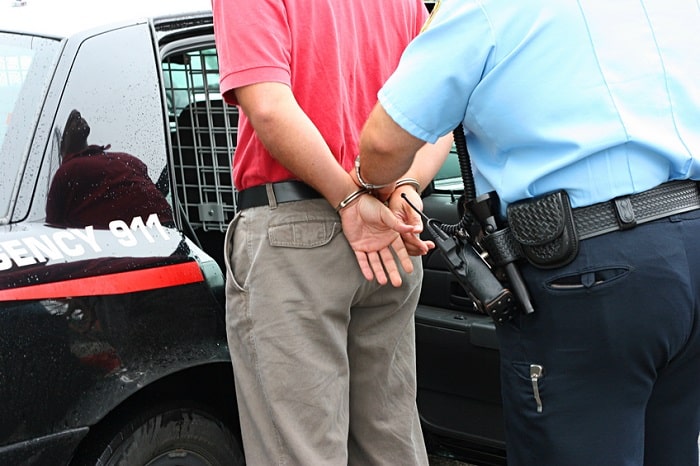DUI Field Sobriety Tests in California
How Accurate are Field Sobriety Tests for DUI?
Administering Field sobriety tests or FSTs for short is a method police use to determine whether a person has been driving under the influence of alcohol. The results of these so-called tests influence an officer’s decision to either administer more tests, the breathalyzer for example, or proceed with a DUI arrest. However; the primary question we need to ask is: exactly how accurate are these tests and should they be used to determine if someone is intoxicated or not?
Many scientists caution against putting too much stock in the science used in developing these tests and seriously question an officer’s ability to determine a driver’s sobriety based on their results. This doesn’t stop prosecutors from relying on the results of FSTs as a key piece of “evidence” in order to gain a conviction for DUI. A practice that dates back to the 1970s!
Are Field Sobriety Tests Mandatory in California?
NO! You are NOT required to complete any FSTs. The primary way an officer establishes reasonable suspicion of DUI once they have pulled you over is through smelling the odor of alcohol on your breath and or person. In fact, it is almost guaranteed that the phrase, “Suspect had a strong odor of alcohol on his/her person,” will be included in any DUI investigative report.
An officer will also look for any abnormal eye movements that suggest intoxication. After which, the officer will request that you perform certain Field Sobriety Tests. This “request” is often is worded and made to sound like a command, so do not get fooled into performing any FST!
Remember, the FSTs are not mandatory, but if you are placed under arrest on suspicion of DUI, you are now required to take either the breathalyzer at the police station or the blood test (to be administered by medical personnel.) You do not have to take both.
If you refuse to take either a breath, blood, or urine test, after arrest then you will have your license suspended for one year and will be faced with fines and additional allegations. This is because of “Implied Consent.” Once you were issued a California driver’s license, you agreed to these terms.
Common Types of Field Sobriety Tests You May Encounter
There are different types of field sobriety tests that can be placed in four general categories: balance tests, coordination tests, mental agility tests, and eye tests. Perhaps the most common fall under the balance tests, which are: the walk-and-turn, the walk the line, one-leg stand, and the “Romberg” balance test.
The Balance Tests
-
The Walk-and-Turn Test
The walk-and-turn test is the most commonly used balance test an officer uses to determine sobriety. Here, you will be asked to walk from a specified distance, then back to the starting point, either on a painted or an imaginary line. If you lift an arm, both arms, or sway, you have “failed” the test.
-
The Walk-the-Line Test
The walk-the-line test is the second most common balance test you may be asked to perform. The officer will ask you to walk on a line, either painted or imaginary and touch your left heel to their right toe and visa-versa for usually 12 steps. Just like the walk-and-turn test, if you lift an arm, both arms, or sways in any way then they’ve “failed” the test.
-
The One-Լeg Stand Test
The one-leg stand is when an officer asks you to stand on one foot and lift the other foot approximately six inches off the ground for a certain amount of time, usually about 30 seconds. If you place the lifted foot on the ground, sway, or lift your arms- you guessed it- you have “failed” the test.
-
“Romberg” Test
The last type of balance test is the “Romberg,” named after the German neurologist Moritz Heinrich-Romberg. This test requires you to tilt your head slightly back, close your eyes and estimate the passage of 30 seconds. During the test the officer will look for six clues as to your intoxication: the amount of swaying, any eyelid or body tremors, ability to estimate 30 seconds, muscle tone, sounds or statements you make during the test, and your ability to follow directions.
Each one of these tests has some problematic issues. The first is, there are a great number of innocent reasons that may cause you to “fail.” Many medical issues, injuries, age-related problems, or just natural poor balance can cause swaying, lifting arms your arms to assist in balancing, or the inability to perform any one of these balance tests. Furthermore, there is no known standard for any of these tests.
There is no statistical or actual scientific data that demonstrates what the average person’s ability to balance is. How can you pass or fail when there is no score to compare your performance! The truth is, these tests are designed for you to fail because they are entirely subjective as to what the officer considers is a “fail.”
Yet another problem with the balance test results we have to be wary of is whether the surface conditions where you performed any FSTs were fair. Was the surface uneven, was there loose pavement, angled streets, muddy or slippery surfaces? What kind of shoes were you wearing at the time- high heels?
The criminal defense attorneys at Manshoory Law Group will not accept any failure of an FST as truth. We have the knowledge and experience to expose these tests as the shams they are.
The Coordination Tests
The most common type of coordination test is the finger-to-nose test. The officer will ask you to tip your head back, spread your arms and then touch the tip of your index finger to the tip of your nose, first with the right hand and then with the left. If you miss the exact tip of your nose or move too slowly, the officer determines you “failed” the test.
The Mental Agility Tests
Mental ability tests test your level of intoxication through the performance of seemingly easy tests. You may be asked to count backward from a random number, recite the alphabet starting with a random letter, or may even be asked to recite the alphabet backward. If you fail to do these tests perfectly or in a timely fashion; then you will inevitably “fail.”
The Eye Tests
The most common eye test is the pupil reaction test. During this test, the officer will shine either a flashlight or a penlight into your eyes and see how quickly your pupils dilate. If your pupils dilate slower than the officer’s partner’s pupils dilate then you are considered intoxicated.
Another common eye test is the nystagmus gaze test. Nystagmus is defined as “rapid involuntary movements of the eyes” and can be caused by many physical factors, not solely intoxication. During this test, the officer will ask you to watch a pencil or pen with only your eyes. You are not allowed to move your head back and forth, only your eyes. The officer is looking for the angle at which your eyes start to move rapidly in a jerking fashion. If the angle is less than 45% then the officer assumes you are intoxicated.
The problem with these tests is that they rely heavily on the officer’s subjective assessments often done without any measurement tool. If the officer is not adequately trained in these tests, then the results can be misinterpreted and should not be considered “evidence” of your intoxication.
Most DUI arrestees perform two or three of the aforementioned tests. Common arguments against their validity are that:
- The field sobriety tests were administered under difficult or stressful conditions.
- The subject’s performance on the tests was influenced by physical ailments and emotional instability.
- The officer’s analysis of the subject’s results was biased.
- The results of the tests were not recorded correctly.
- The tests are not as easily performed by intoxicated or sober persons alike.
The Smell of Alcohol on Your Breath or Person
The smell of alcohol on a driver’s person or breath triggers the officer’s request for you to perform one or more of the field sobriety tests mentioned above. And as mentioned previously, officers will most certainly state that they smelled “a strong odor of alcohol on the driver’s breath or person.” But does the odor of alcohol on your breath or person automatically equate to intoxication? No. Nor can an officer properly determine the level of intoxication from the mere smell of alcohol or what type of alcohol was consumed.
An important fact to remember is that beer and wine are the most pungent types of alcohol and at the same time they contain the smallest amount of alcohol by volume. One can drink more beer and wine and permeate a stronger odor of alcohol, but still, be under the legal limit of .08%.
That is why if an officer smells alcohol on your breath and or person, the officer will ask you to perform a field sobriety test because he or she knows that the mere odor of alcohol does not justify an arrest for DUI.
The Breathalyzer Test
When an officer stops somebody on suspicion of DUI, performs field sobriety tests, and still believes the driver is intoxicated, then the officer has the right to execute a breathalyzer test. A breathalyzer test is used to prove a subject is guilty by measuring the amount of alcohol on a person’s breath. Breathalyzer tests are administered to you at the scene of the alleged crime. This is a preliminary screening test which you are not required to perform.
California requires that you need to provide two samples. The two samples must measure within 0.020 units of each other for the test to be considered valid. If the two samples do not measure within 0.020 units of each other it can be argued that either the device or the operator was working improperly and not in compliance with Title 17 requirements.
There are a number of factors that can negatively affect a breathalyzer reading:
- If the subject ate something prior to the test.
- If the subject burped during the test.
- If the subject used mouth care strips, tobacco, or an inhaler with 15 minutes of the test.
- If the subject was exposed to acetone or is an uncontrolled diabetic.
It’s important to remember a couple of important facts:
- First that you are only required to take a breathalyzer test or give a blood sample, but not both, and only if you have been placed under arrest. If the officer believes that you are driving under the influence of an intoxicating agent, not alcohol, then a urine test may be an option.
- Second, an officer cannot force you to take one test over another type of test. For example, there have been cases when an officer attempt to intimidate people into taking the breathalyzer test because the results are available faster, and there is no sample for your attorney to have it independently tested. If an officer attempts to lead you one way or the other, then that will be used against the officer in court.
Los Angeles Lawyers Can Help
If you or a loved one is being charged with a DUI, please contact us immediately for a free consultation. Schedule an appointment to meet with us in person, or feel free to submit an evaluation online and we will get in contact with you ASAP.




